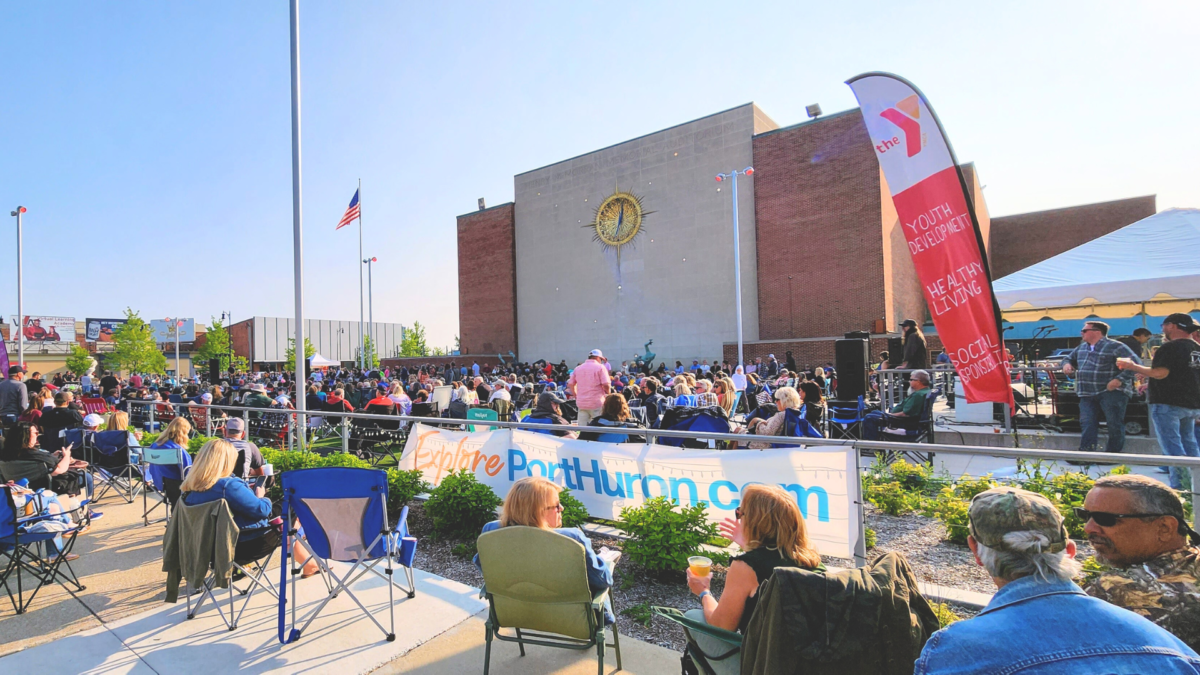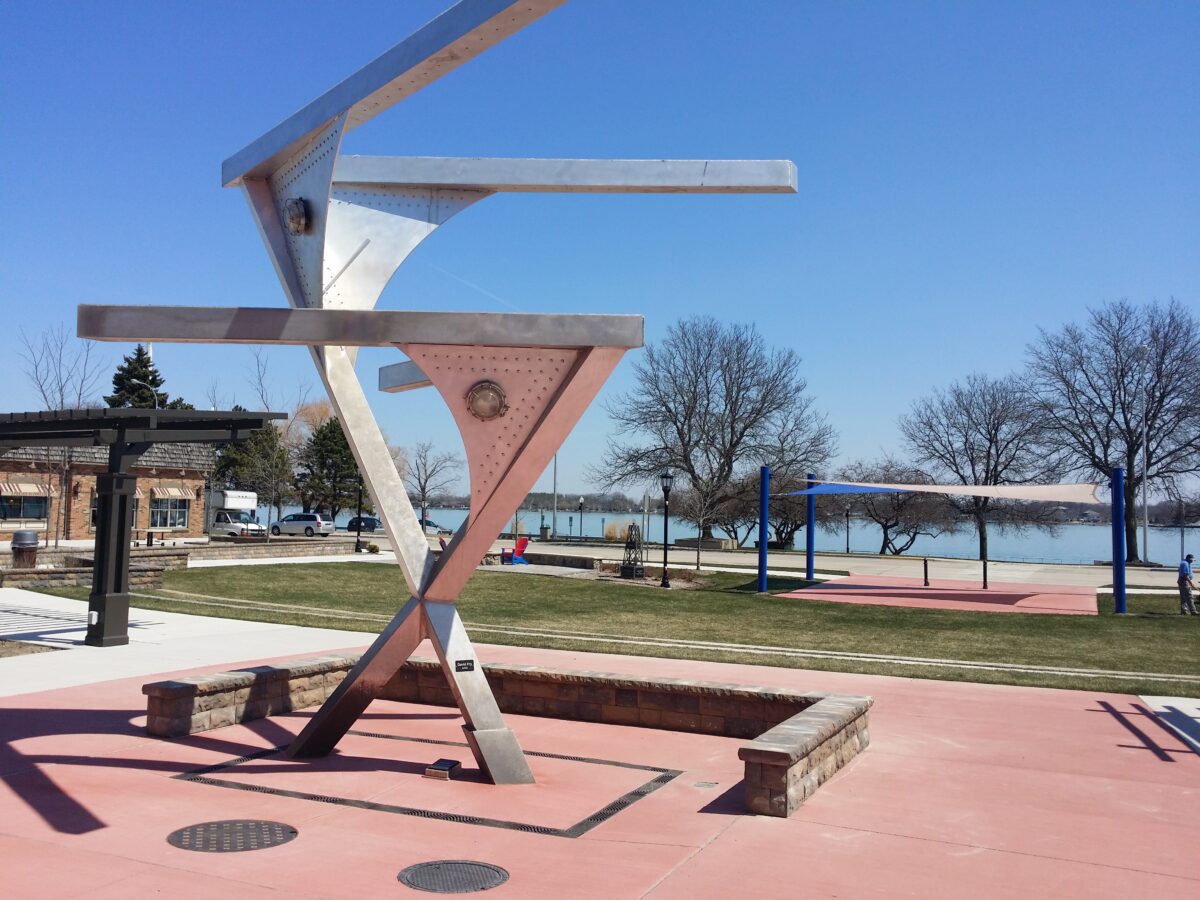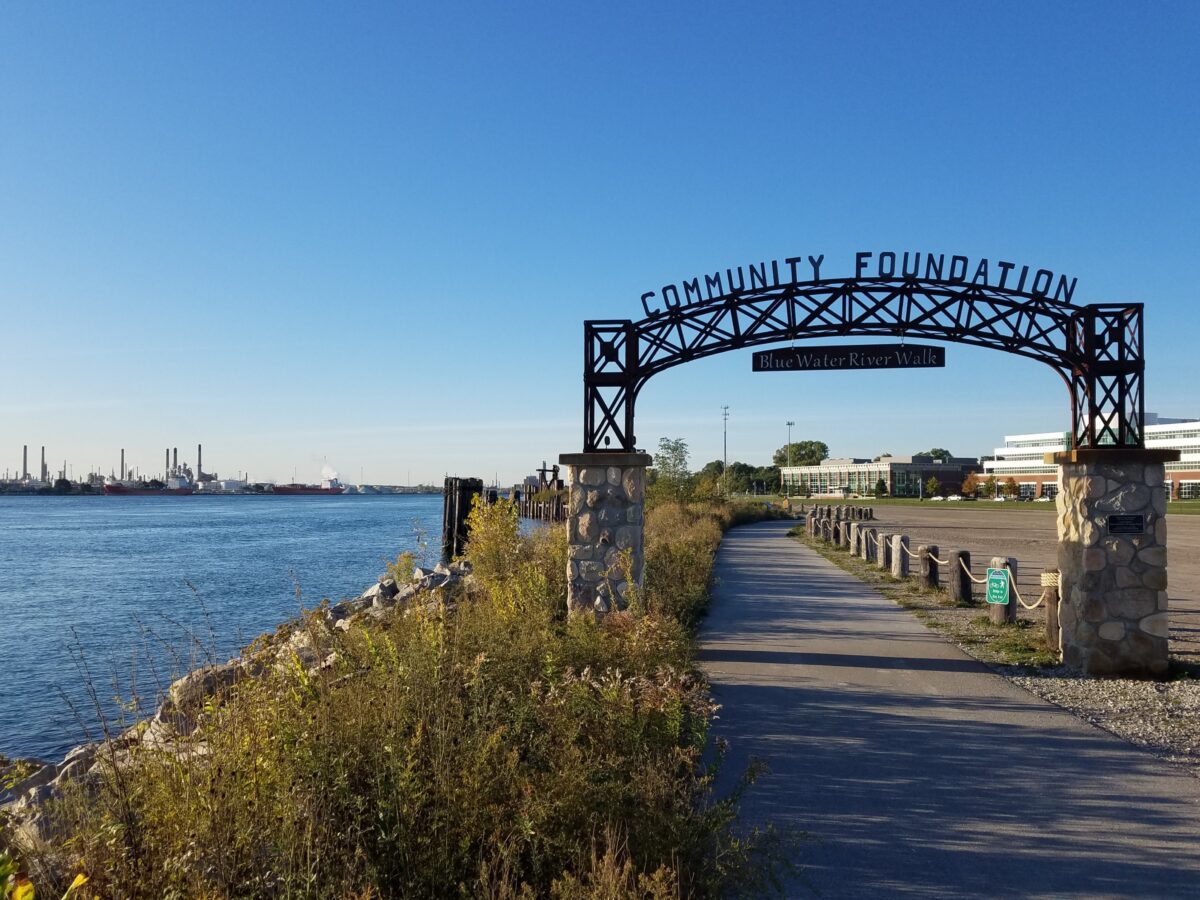By Laura Fitzgerald

If you take a walk, run, or bike ride along the Bridge to Bay Trail (B2B) in St. Clair County, you’ll experience more than just beautiful scenery. Stretching over 50 miles, this trail offers views of massive freighters and sailboats gliding along the blue waters of the St. Clair River and Lake Huron. Natural beaches and wetlands are home to various birds and amphibians, while fishermen cast their lines as families and friends stroll, bike, and skate along the trail.
But the B2B Trail is more than just a place for recreation. It connects twelve municipalities and winds through multiple downtowns, drawing residents and visitors to the small businesses that line its path.
Over the last ten years, it’s estimated that over $180 million has been invested in 60 different public and private projects along the trail. These projects include everything from restaurants and entertainment venues to housing, hotels, and retail stores. While this estimate is impressive, the actual number is likely even higher.
“The investments along the Bridge to Bay corridor over these last ten years may exceed any other ten-year timeframe,’ said Randy Maiers, President and CEO of the Community Foundation of St. Clair County.
A History of the Trail
The B2B Trail was conceived in the early 1990s by the St. Clair County Parks and Recreation Commission. The goal was to link the county’s communities along the Great Lakes coastline.
“Back then, the county’s waterfront wasn’t as fully utilized for its economic and recreational potential as it is today,” said Sheri Faust, Director of Friends of the St. Clair River.
In 2017, a new coalition of stakeholders formed a Regional Trails Board and began updating the trail’s plan after a benchmarking trip to the TART Trails in Traverse City. Friends of the St. Clair River took the lead to implement the plan, with significant support from the Ralph C. Wilson Jr. Foundation and the Community Foundation of St. Clair County. Today, about half of the trail has been paved, with work on the remaining sections ongoing.
Investments along the B2B Corridor
For many, the trail’s potential for economic impact and community vibrancy has always been a primary goal. Randy Maiers, President and CEO of the Community Foundation of St. Clair County, admitted he was initially skeptical about the trail’s economic impact but now sees it as a driver of growth and prosperity.

“We have proof that a large regional trail system makes an economic difference.”
Since 2014, investments along the B2B corridor include:
- Housing: $52 million
- Hotels: $50 million
- Restaurants: $10 million
- Retail: $5 million
- Education: $8.7 million
- Recreation: Over $11 million
- Trail Sections: $12.3 million
- Entertainment: $33.5 million
- Business Development/Coworking Spaces: $7.75 million
St. Clair County Economic Development Alliance CEO Dan Casey said trails and the investments along them create a quality sense of place through the recreational and economic activities they provide. Investments also diversify the jobs, services, and amenities available to residents and visitors, which strengthens the economy.
In Port Huron, significant projects include a $15 million investment in City Flats Hotel and $1.2 million in McMorran Place Plaza. The Plaza is a bustling center of activity at the outdoor bar, music venue, splash pad and in the winter around the ice rink. Another notable project is Wrigley Hall and Entertainment Center, a $14 million development that transformed a vacant warehouse into a vibrant mixed-use space with a food hall, entertainment venue, and 36 loft style apartments.
Downtown St. Clair has also seen various improvements, including over $800,000 invested in the revitalization of Riverview Plaza’s courtyard by the Community Foundation and the opening of several new businesses like Anchor Point Bistro, War Water Brewery and most recently the Hamlin Pub.

St. Clair City Manager Quentin Bishop said, “The city’s bustling downtown is a far cry from its struggling past, and the B2B Trail leads right to its heart. We’ve seen the value of placemaking in creating quality of life and fostering a distinct culture.”
Marine City and Marysville have also benefited from the trail, with major investments in hotels, restaurants, and recreational amenities. These projects are helping to create a quality sense of place, attracting people to live locally, work locally, and enjoy the area.
Major investments in Marine City include the opening of The Inn on Water Street, expansions to the Marine City Fish Company restaurant, and the opening or planning of three condominium/apartment complexes.
Currently, Marine City is building out a public marina on the Belle River as an offshoot of the trail, which City Manager Scott Atkins said will be a major recreational attraction for boaters, kayakers, fishermen, and other people looking to enjoy the area’s natural resources.
“The Ralph C. Wilson Jr. Foundation and our local community foundation continue to be critical partners to the growth of both Marine City and our entire region,” said Atkins.
Later this year a new micro hotel, perched on the edge of Marysville Park, and the scenic route of the B2B trail, will open for bookings. A unique, cozy stay in what used to be the city’s historical museum, offers 5 suites and stunning views of the St. Clair River. The hotel will help fill a gap in the local economy by providing a small-town getaway for an area with few hotels and vacation rentals that will have easy access to a nearly-completed outdoor amphitheater.
“The Bridge to Bay Corridor is the key to our region’s financial growth,” Maiers said. “It is the engine that drives our economy.” He added that the region seems to be attracting more interest and attention from visitors and tourists in the Metro Detroit area, who come from less than an hour away to enjoy the unique waterfront downtowns and trails.
Bridge to Bay Trail Fosters Stewardship & Social Opportunities

The B2B Trail does more than boost the local economy—it also fosters social opportunities and environmental stewardship. The trail is accessible to people of all ages, abilities, and backgrounds, connecting communities and creating shared spaces.
“People are more likely to take care of places that are special to them if they can access them,” said Faust. The trail encourages people to care for the area’s natural assets, whether it’s a quiet spot by the shore or a favorite bird-watching location. In this way, the trail serves as a pathway for recreation, conservation, and stewardship.
Conclusion
The Bridge to Bay Trail progression shows how community engagement and strategic planning can drive economic growth, enhance quality of life, and promote environmental stewardship. As the trail continues to grow, so too will the communities it connects, ensuring a bright and sustainable future for St. Clair County and its residents. The B2B Trail is not just a scenic route; it’s a vital corridor for recreation, social interaction, and economic prosperity, proving that the benefits of trails go far beyond their natural beauty.
